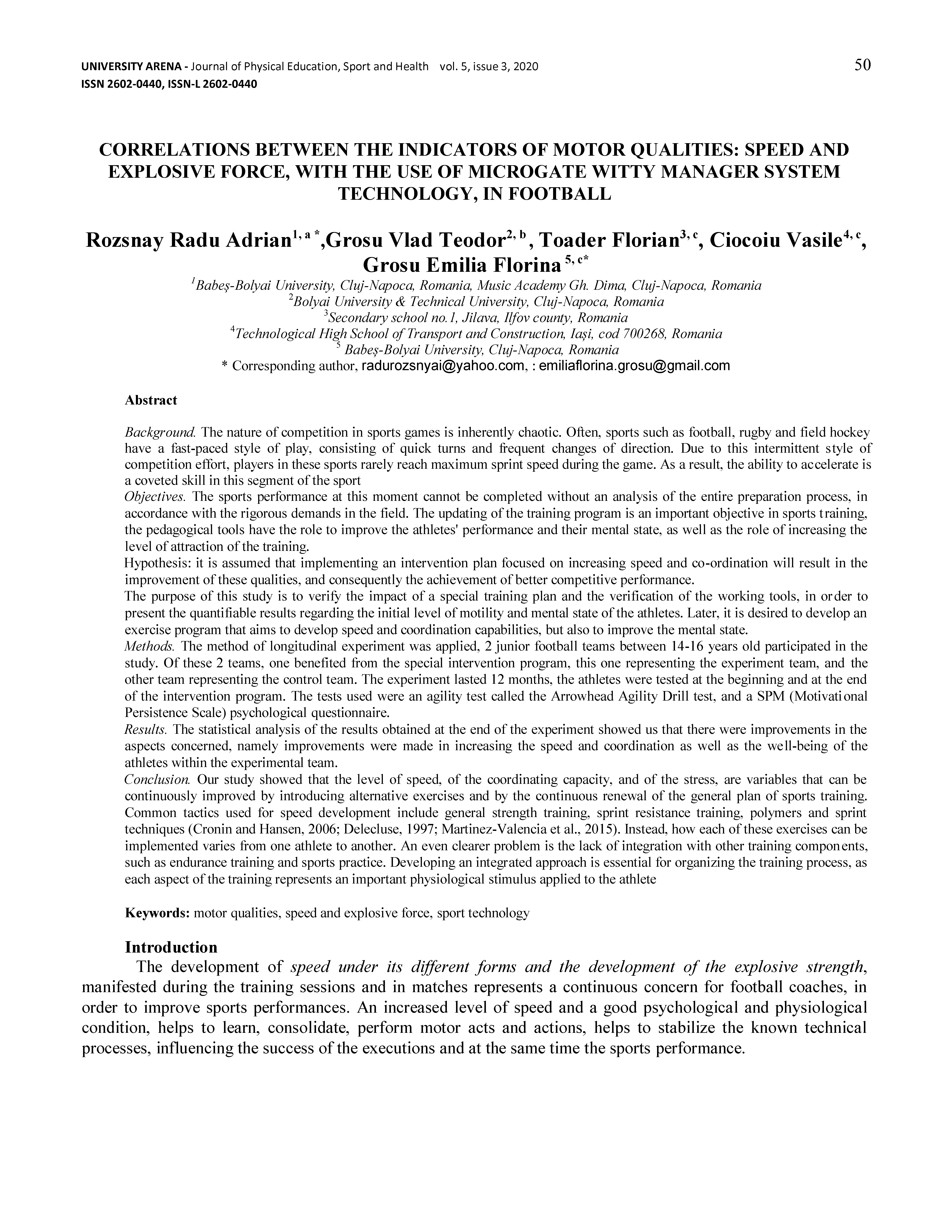CORRELATIONS BETWEEN THE INDICATORS OF MOTOR QUALITIES: SPEED AND EXPLOSIVE FORCE, WITH THE USE OF MICROGATE WITTY MANAGER SYSTEM TECHNOLOGY, IN FOOTBALL
DOI:
https://doi.org/10.62229/UaV_3_20-8Keywords:
motor qualities, speed and explosive force, sport technologyAbstract
Background. The nature of competition in sports games is inherently chaotic. Often, sports such as football, rugby and field hockey have a fast-paced style of play, consisting of quick turns and frequent changes of direction. Due to this intermittent style of competition effort, players in these sports rarely reach maximum sprint speed during the game. As a result, the ability to accelerate is a coveted skill in this segment of the sport Objectives. The sports performance at this moment cannot be completed without an analysis of the entire preparation process, in accordance with the rigorous demands in the field. The updating of the training program is an important objective in sports training, the pedagogical tools have the role to improve the athletes' performance and their mental state, as well as the role of increasing the level of attraction of the training.
Hypothesis: it is assumed that implementing an intervention plan focused on increasing speed and co-ordination will result in the improvement of these qualities, and consequently the achievement of better competitive performance.
The purpose of this study is to verify the impact of a special training plan and the verification of the working tools, in order to present the quantifiable results regarding the initial level of motility and mental state of the athletes. Later, it is desired to develop an exercise program that aims to develop speed and coordination capabilities, but also to improve the mental state.
Methods. The method of longitudinal experiment was applied, 2 junior football teams between 14-16 years old participated in the study. Of these 2 teams, one benefited from the special intervention program, this one representing the experiment team, and the other team representing the control team. The experiment lasted 12 months, the athletes were tested at the beginning and at the end of the intervention program. The tests used were an agility test called the Arrowhead Agility Drill test, and a SPM (Motivational Persistence Scale) psychological questionnaire.
Results. The statistical analysis of the results obtained at the end of the experiment showed us that there were improvements in the aspects concerned, namely improvements were made in increasing the speed and coordination as well as the well-being of the athletes within the experimental team.
Conclusion. Our study showed that the level of speed, of the coordinating capacity, and of the stress, are variables that can be continuously improved by introducing alternative exercises and by the continuous renewal of the general plan of sports training. Common tactics used for speed development include general strength training, sprint resistance training, polymers and sprint techniques (Cronin and Hansen, 2006; Delecluse, 1997; Martinez-Valencia et al., 2015). Instead, how each of these exercises can be implemented varies from one athlete to another. An even clearer problem is the lack of integration with other training components, such as endurance training and sports practice. Developing an integrated approach is essential for organizing the training process, as each aspect of the training represents an important physiological stimulus applied to the athlete.


